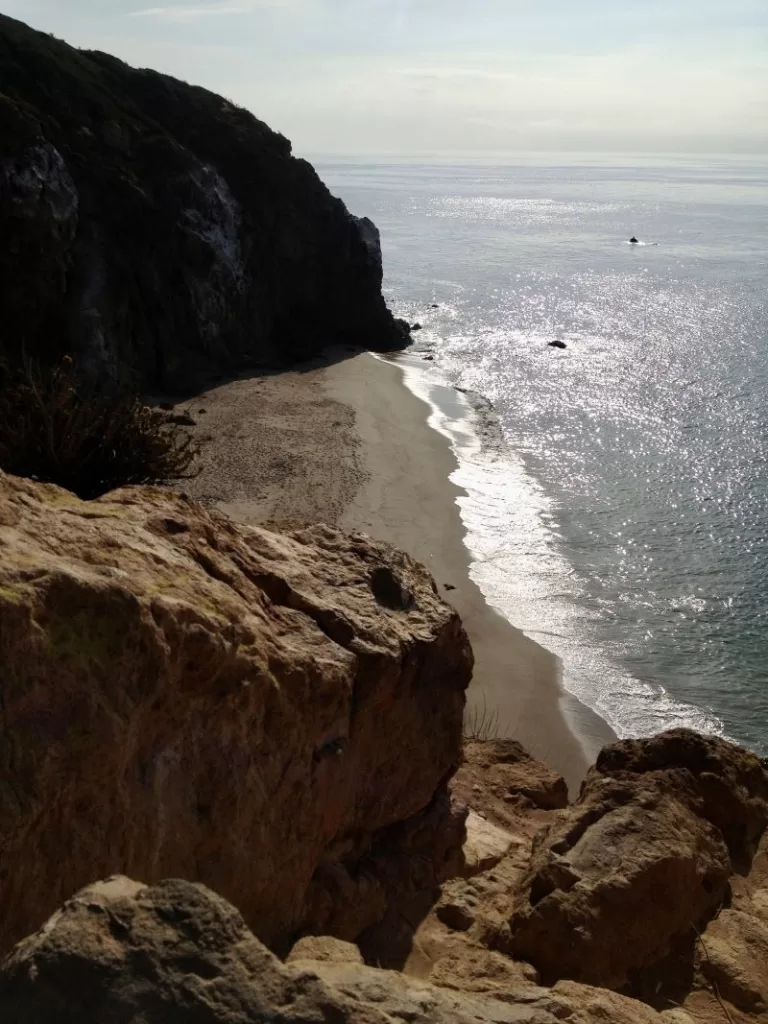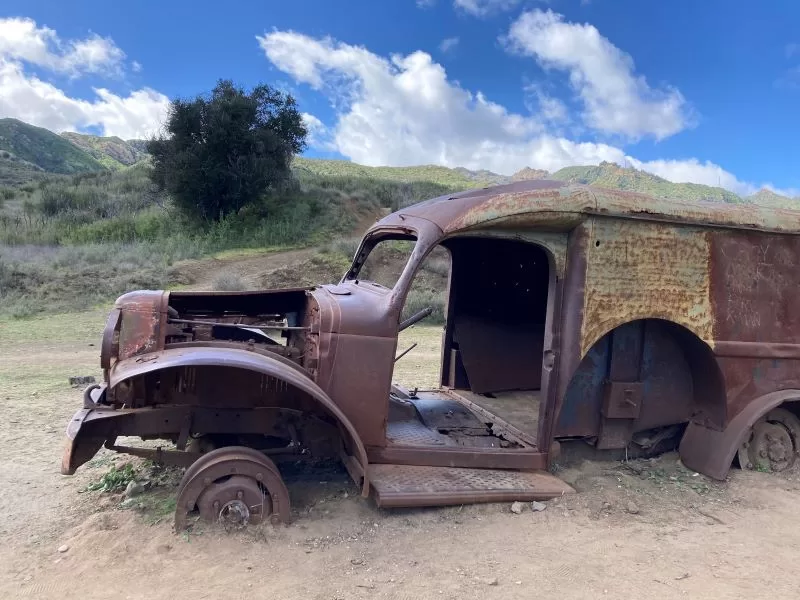
How the Santa Monica Mountains Helped Shape Film History
A reader recently reached out for help finding the film location for an episode of the TV series Alfred Hitchcock Presents, filmed in 1955. The location he sought turned out to be the stretch of Pacific Coast Highway between Topanga and Sunset boulevards. On the map, it’s called Ratner Beach. Tracking it down required a technique developed by local film historians, who study the background of film scenes and try to match the ridgelines and other natural landmarks to the current landscape. In this case, the towering cliff just east of the intersection of Topanga Canyon Blvd. and the slope of the hills looking towards Chautauqua provided the necessary clues. Despite decades of change, development and even a couple of major landslides, this stretch of Coast Highway remained recognizable. Another scene in the episode—entitled “Revenge”—includes a quick glimpse of the Malibu Pier, less than a decade after the construction of this local landmark’s twin Cape Cod style towers.
The greater Los Angeles area is full of film locations, but the Santa Monica Mountains National Recreation Area is an especially rich treasure trove of film history, in part because two major studios owned vast ranches in the area, but also because the major landmarks like mountain peaks, rock formations and views of the ocean that attracted location scouts in the first place have better odds of surviving development than buildings or street corners. Using natural landmarks, film historians can often pinpoint the exact location where scenes were shot, even when there is no longer any trace of sets.
The locations of the Welsh coal mining town from How Green Was My Valley, the Army camp from the long-running TV series M*A*S*H, Tarzan’s Africa from numerous Johnny Weissmuller films, the post-apocalyptic landscape of the original 1968 Planet of the Apes film and its sequels, and billionaire philanthropist Tony Stark’s cliffside mansion from the Ironman movies are all part of the National Recreation Area, along with the locations for thousands of other movie scenes shot over the past hundred years. Finding the exact locations may require a certain amount of detective work, but the locations themselves are still here, and that’s unusual in a landscape that is famous for changing all the time and a culture that doesn’t have a good record for valuing and preserving its history.
The newly created motion picture industry migrated from the East Coast to the West almost as soon as the commercial potential for the medium was realized in the first decade of the twentieth century. Early film makers gravitated to Los Angeles because the weather enabled them to film year-round. The Santa Monica Mountains provided the perfect location—close to Los Angeles, but exotic enough to provide a convenient stand in for an entire multiverse of locations.
According to film historians Karie Bible, Marc Wannamaker and Harry Medved, authors of Location Filming in Los Angeles, scenes from the first dramatic film shot in California—the Selig Polyscope Company’s 1908 costume drama The Count of Monte Cristo—may have been filmed near what is now Topanga State Beach.
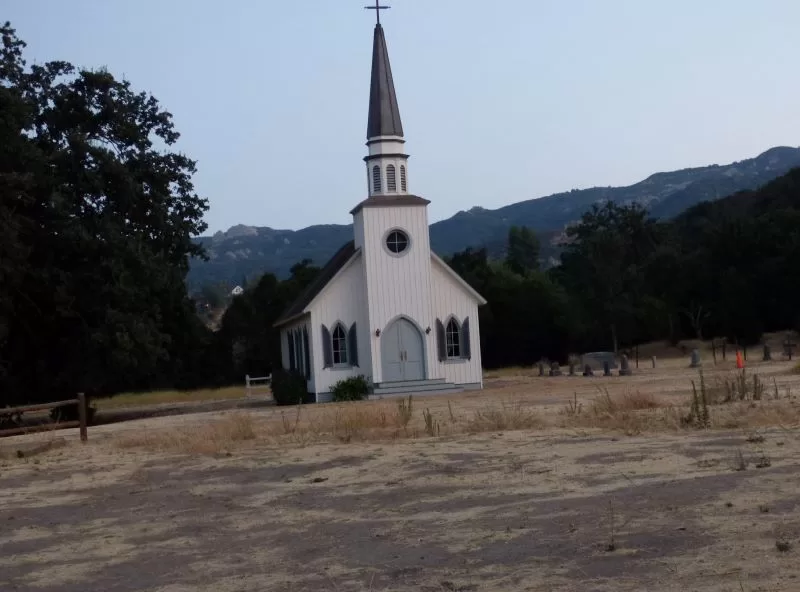
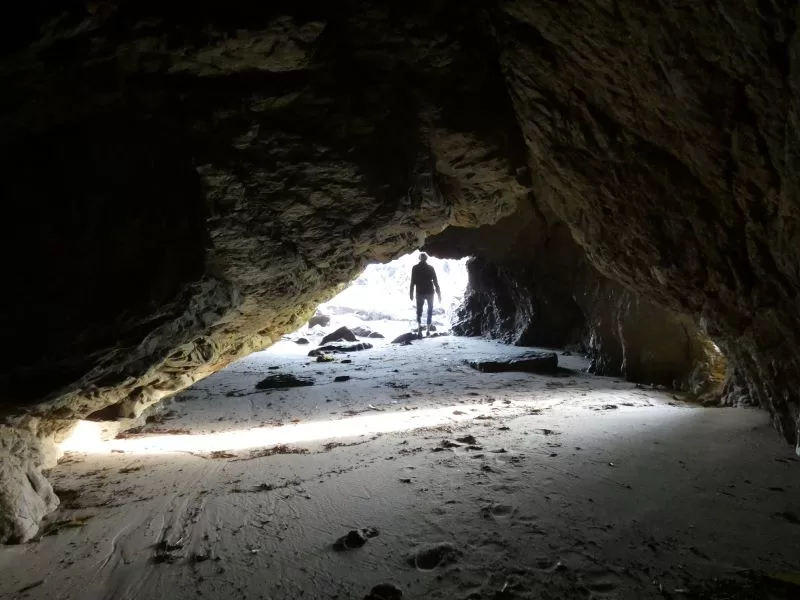
Mark Wannamaker researched and helped write the National Park Service’s historical research study for Paramount Ranch, a historic film studio ranch-that is now part of the SMMNRA. In the report, he recounts the process that led to the creation of studio ranches.
“Before 1915, many companies would just use any open land, or lease private ranches for a short time,” he wrote. “However, this proved to be more trouble than it was worth, due to the fact that there would be time limitations, less privacy, or even sudden evictions. Film companies did not want to be limited to what they could do on a property, or when they could use a ranch, or how long they could use it. The one alternative would be to own or to “long term” lease a ranch for their own needs.”
One of the first studio ranches was Inceville, built by pioneering film producer Thomas Ince on land he leased at the intersection of what is now Sunset Boulevard and Pacific Coast Highway. Inceville covered 18,000 acres at its peak, and included housing for more than 700. The temporary population was always shifting, but included film crews and an entire Wild West show complete with cowboys and Indians—as many as 100 Lakota Sioux were brought from Oklahoma to work as extras in Ince’s popular westerns. The corrals built for cattle when the ranch was used for its original purpose held bison, oxen, and hundreds of horses.
Inceville was established in 1911. A year later, Universal Studios purchased what is now Universal City. In 1915, the Lasky Feature Play Company followed Universal’s example, taking a long term lease on a thousand acres of the Hollingsworth Ranch in what would become Burbank (today, this property is home to Forest Lawn Cemetery).
Lasky would eventually become Paramount Pictures. The studio outgrew the old Lasky Ranch and looked around for something bigger, settling for 2,700 acres in Agoura Hills. It made a great location for Westerns—which isn’t surprising, since this area still was a corner of the wild west—but it also offered an entire world of exotic locals, from provincial France to the steppes of Asia, and the hilly terrain meant multiple films could be shot simultaneously, without the French farmhouse ruining the view of Outer Mongolia.
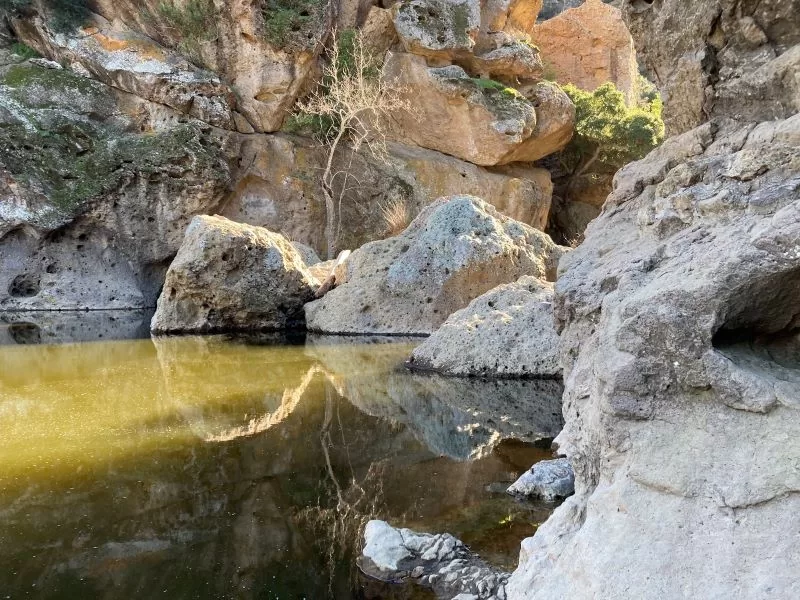
In 1946, Paramount Ranch gained a major new neighbor. Rival studio 20th Century Fox purchased the former Crags Country Club, a 2,000-acre property that included a seven-acre manmade lake, renamed Century Lake. This area was the site of earlier productions. A 1917 version of Daddy Longlegs, starring Mary Pickford, features a scene filmed at Rock Pool, and Crags Country Club played a major role in director John Ford’s 1941 film How Green Was My Valley. Ford transformed a hillside next to what is now the main parking lot at Malibu Creek State Park into a Welsh coal mining village. The film, scripted by longtime Malibu resident Philip Dunne, went on to be nominated for 10 Academy Awards and won five, including Best Picture. The film’s success may have influenced the studio’s decision to buy the land, which would be used for hundreds of film locations.
Rock Pool, at the base of the Century Lake dam, shows up in dozens of films, including the Johnny Weissmuller Tarzan series, shot between 1932-48. A short but key scene in George Roy Hill’s 1969 Butch Cassidy and the Sundance Kid was shot there in 1969—it was a pick-up shot filmed after production had mostly wrapped. The Doctor Dolittle crew imported an assortment of exotic animals to the pool in 1967— an elephant and an alligator. Charleton Heston went skinny dipping there in the 1968 Planet of the Apes.
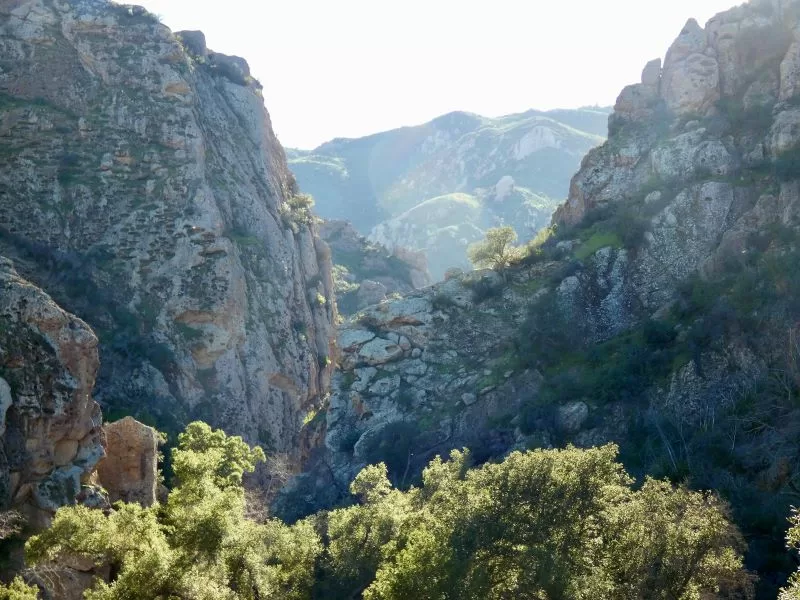
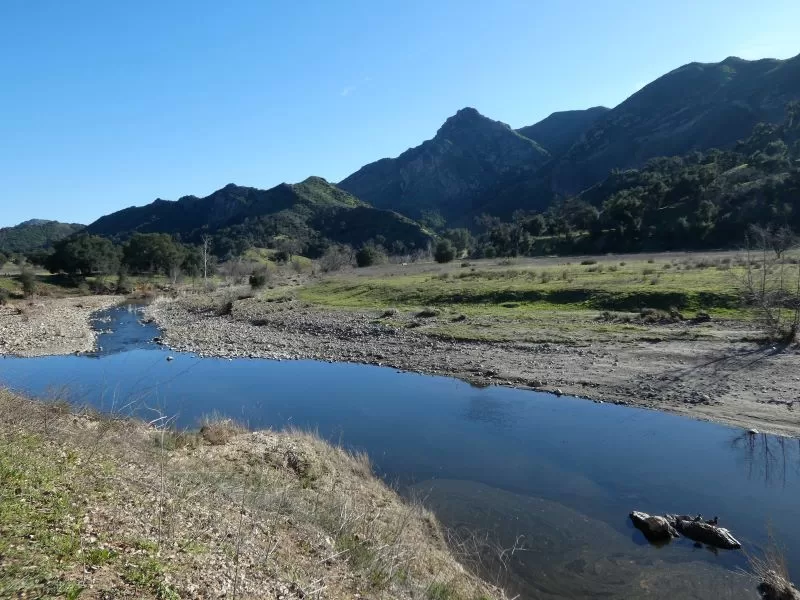
Goat Buttes and Crags Peak are instantly recognizable from the intro to the TV series M*A*S*H, but also doubled for Africa in the 1962 Irwin Allen Cinemascope version of Jules Verne’s Five Weeks in a Balloon, and as the English countryside in the 1967 big budget musical version of Doctor Doolittle directed by Richard Fleische, among other films.
State Parks acquired Century Ranch in 1976, but filming continued for several decades. The long-running TV series M*A*S*H finished shooting there in 1983. That was the last ongoing use of the property from the 20th Century Fox period, but in 1998, the main parking lot area that had once been a Welsh town was transformed into 1950s suburbia for Pleasantville, directed by Gary Ross.
The park contains few remnants from the film studio era. The home built in 1948 for Mr Blandings Builds His Dream House, starring Cary Grant and Myrna Loy, was so well constructed that it continues to be used as the headquarters for the park’s rangers. The large water tank visible from the main parking lot is said to have been built to provide the rainy weather and fire suppression required for How Green Was My Valley. A couple of crumbling concrete platforms and some stone steps are left over from the 1968 “Planet of the Apes,” and the small, bunker-like concrete structure on Crags Road near the bridge once housed explosives. The real film legacy is preserved in the landscape: Crags Peak, and the dramatic, volcanic Goat Buttes are instantly recognizable in any film or TV show they appear in.
That is also true of Paramount Ranch. Paramount once boasted one of the most extensive western sets. Its first incarnation featured set pieces transported from the original Lasky Ranch. In the early 1950s, Paramount sold the ranch to a man named William Hertz, who reportedly augmented the remaining original set buildings with props and buildings scavenged from defunct western town sets in other areas.
There continued to be an active Western set at the ranch even after it was acquired by the National Park Service, but everything except the a train station built for the TV show Doctor Quinn, Medicine Woman, and a church most recently used for the series Westworld, was burned in the Woolsey fire in 2018. Plans are currently underway to build a new western set,and even though the sets burned, the dramatic and distinctive views, including the looming presence of Sugarloaf Peak and Ladyface Mountain, remain instantly identifiable without man made additions.
The movie ranch boom continued throughout the first half of the twentieth century. Movie lots sprang up all over. Canny ranch owners converted disused farm buildings and empty pastures into studio rentals, or sold their land outright to the burgeoning industry’s growing roster of studios. Television, and the craze for TV westerns in the 1950s, generated more need for film locations. At the peak of the TV serial era there were western town sets all over, including one Ingram Ranch on Mulholland, right in Topanga’s back yard. Ingram, a retired Western film actor himself, made a little extra money offering tours of his western set—.50 cents on Sundays. Almost all of the old movie ranches have given way to urban sprawl, but because Paramount Ranch and Century Ranch are now part of the Santa Monica Mountains National Recreation Area, they offer a rare opportunity to explore the landscape of film history.
Former National Park Service ranger Mike Malone has helped identify numerous film locations. “The hills don’t lie,” told me during an interview in 2018. “It’s detective work,” he said, “Like doing genealogy.”
The ridgeline photographed in the 1939 film “Beau Geste,” starring Gary Cooper and Ray Milland, enabled Malone to find the exact location of the film site in Paramount Ranch, even though no trace of the sets remain. The persistence of film enthusiasts like Malone is helping to fill in entire lost chapters of cinema history.
The great era of the movie ranch is over, but new film location history continues to be made in the area. Key sequences in the second season of The Mandalorian sent fans on a pilgrimage up the precipitous Rocky Peak Trail in the Santa Susana Mountains in Chatsworth in the footsteps of the eponymous bounty hunter. Film history is ephemeral. Sets are rarely built to last, but the films themselves provide a record of a lost landscape and an irresistible puzzle for film enthusiasts. That mountain over there? It might just mark the location of the lost city of Shangri-La—no, really!
